Reviewees
Professional Review and Development (PRD) discussion
Of the 692 Reviewees who answered, 92% confirmed that they had a PRD meeting as part of the PU sign-off process. Of the 529 who reported on how useful their PRD meeting was, 24% stated that their PRD meeting was not very useful or not useful at all.
Reviewees were also asked ‘Please tell us which factors prevented your opportunity to discuss your self-evaluation, professional learning and evidence of impact and plan future development needs as part of the PRD process?’. Many factors were mentioned with the most common related to issues with the reviewee’s line manager; illness; lack of time; lack of support for supply teachers; and personnel changes within the school which impacted on the process.
<span id="es-chart-01" class="table_caption" style="text-align:center; margin: auto; display: block; padding-top: 3.5rem">Graph 14: Tools used by reviewees to prepare for PRD discussion</span>
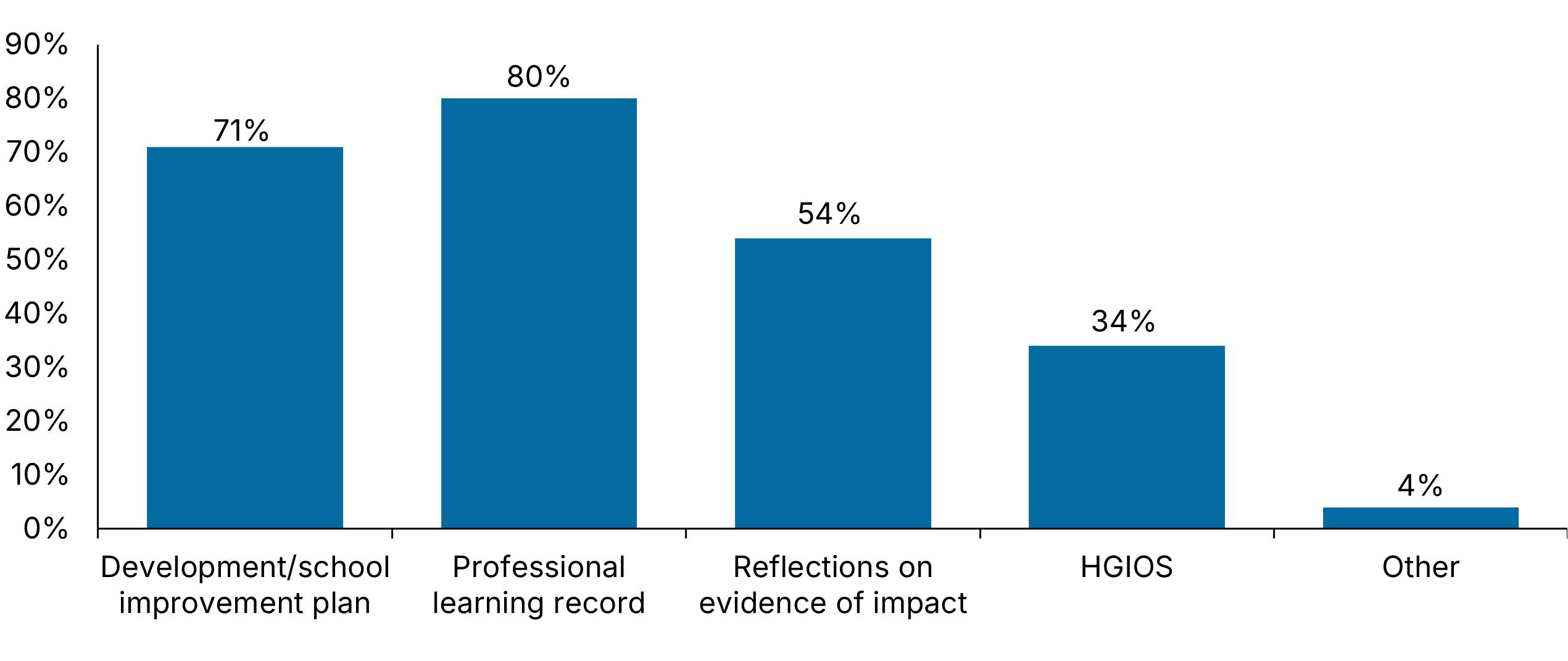
Graph 14 (n=621) shows the tools used by reviewees in order to prepare for their PRD meeting with the highest percentage of respondents (80%) using their professional learning record and 71% using their department/school improvement plan. More than half of teachers (54%) indicated that they reflected on evidence of impact to prepare for their PRD meeting. This percentage is relatively low and suggests that further work could be done in this area to encourage reviewees to reflect more deeply.
<span id="es-chart-01" class="table_caption" style="text-align:center; margin: auto; display: block; padding-top: 3.5rem">Graph 15: Focus of PRD discussion</span>
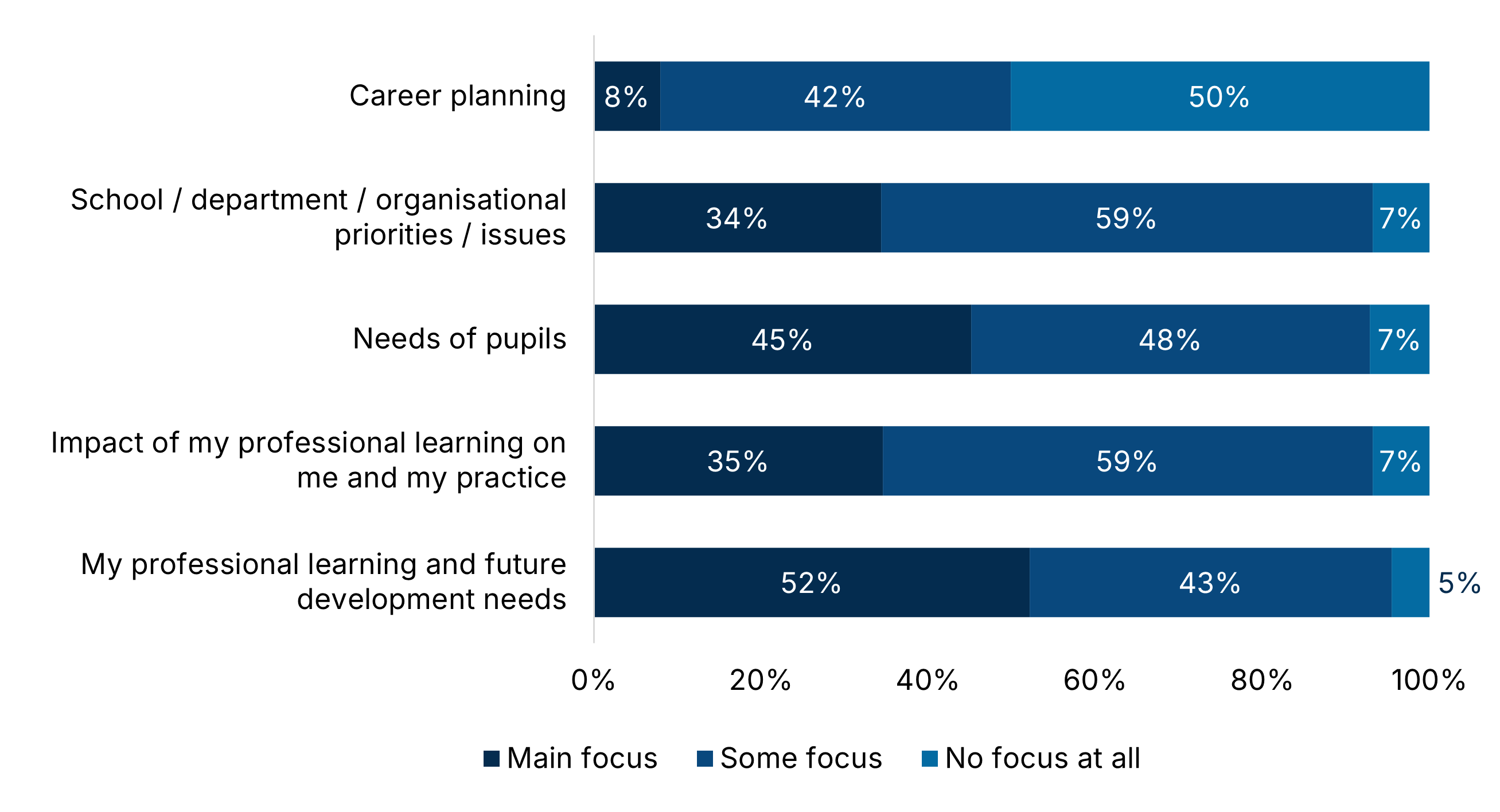
Graph 15 (n=529) shows the main areas of focus for PRD discussion. For 50% of respondents, career planning was not part of the discussion. The registrant’s professional learning and future development needs scored highest (95%) with 93% of respondents also discussing their school/departmental/organisational priorities/issues, the needs of the pupils and the impact of their professional learning on themselves and their practice.
Respondents were asked to reflect on the balance of support and challenge at their PRD meeting. Graph 16 (n=529) shows that 84% of reviewees felt there was just about the right balance of support and challenge.
<span id="es-chart-01" class="table_caption" style="text-align:center; margin: auto; display: block; padding-top: 3.5rem">Graph 16: Balance of support and challenge</span>
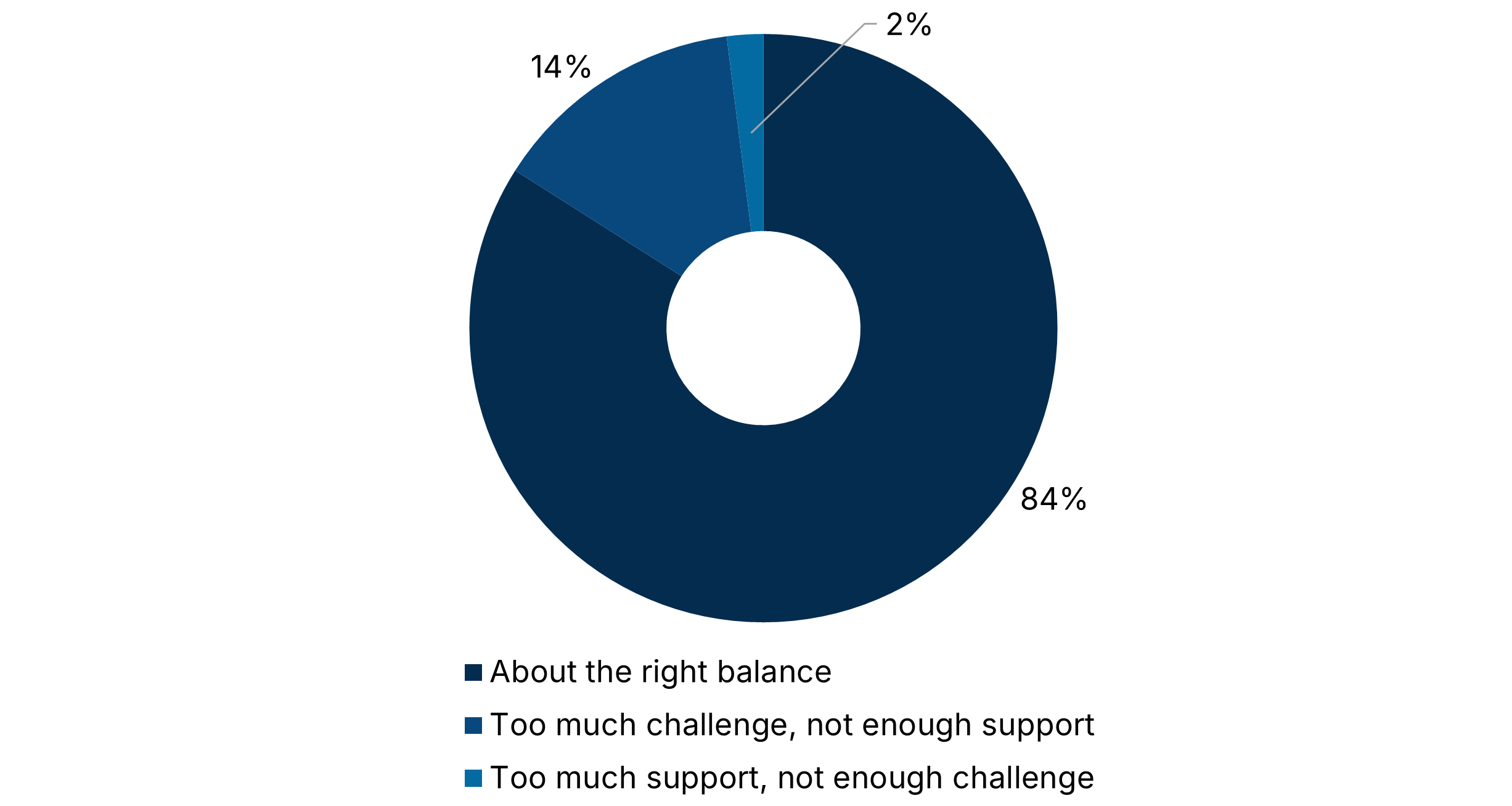
<span id="es-chart-01" class="table_caption" style="text-align:center; margin: auto; display: block; padding-top: 3.5rem">Graph 17: Balance of support and challenge compared to coaching and/or mentoring approach</span>
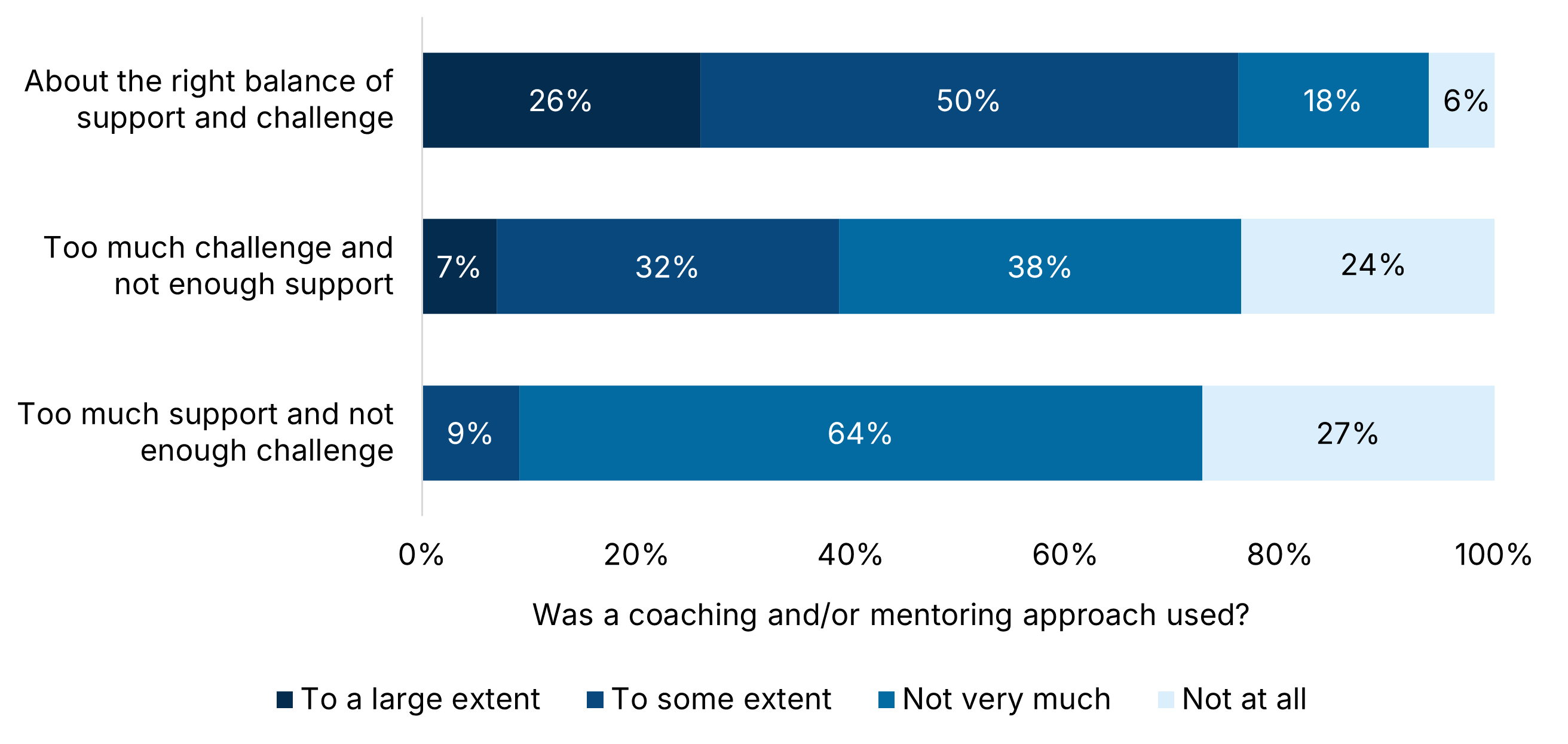
Graph 17 compares the responses of those from graph 16 with their thoughts on whether a coaching and/or mentoring approach was used. It shows that 76% of those who thought there was the right balance of support and challenge also thought that a coaching and/or mentoring approach was used to a large extent or to some extent. This shows a relationship between the perceived use of a coaching and/or mentoring approach and the right balance of support and challenge.
Standards
Of the 621 reviewees who responded to the question ‘To what extent did you use the Professional Standards for your self-evaluation in preparation for your PRD meeting?’, 12% did not use the Professional Standards very much or at all. The respondents were then asked which Standards they used and to what extent, and the responses are shown in graph 18. The Standard for Career-long Professional Learning was most used with 85% of respondents using that Standard to a large extent or to some extent. The Standard for Full Registration was second highest at 69%. It should be noted that the low percentage of respondents using the Standard for Lecturers in Scotland’s Colleges could be indicative of a lower percentage of college lecturers responding to the survey compared to schoolteachers and should therefore be treated with caution.
<span id="es-chart-01" class="table_caption" style="text-align:center; margin: auto; display: block; padding-top: 3.5rem">Graph 18: Standards used for PRD preparation</span>
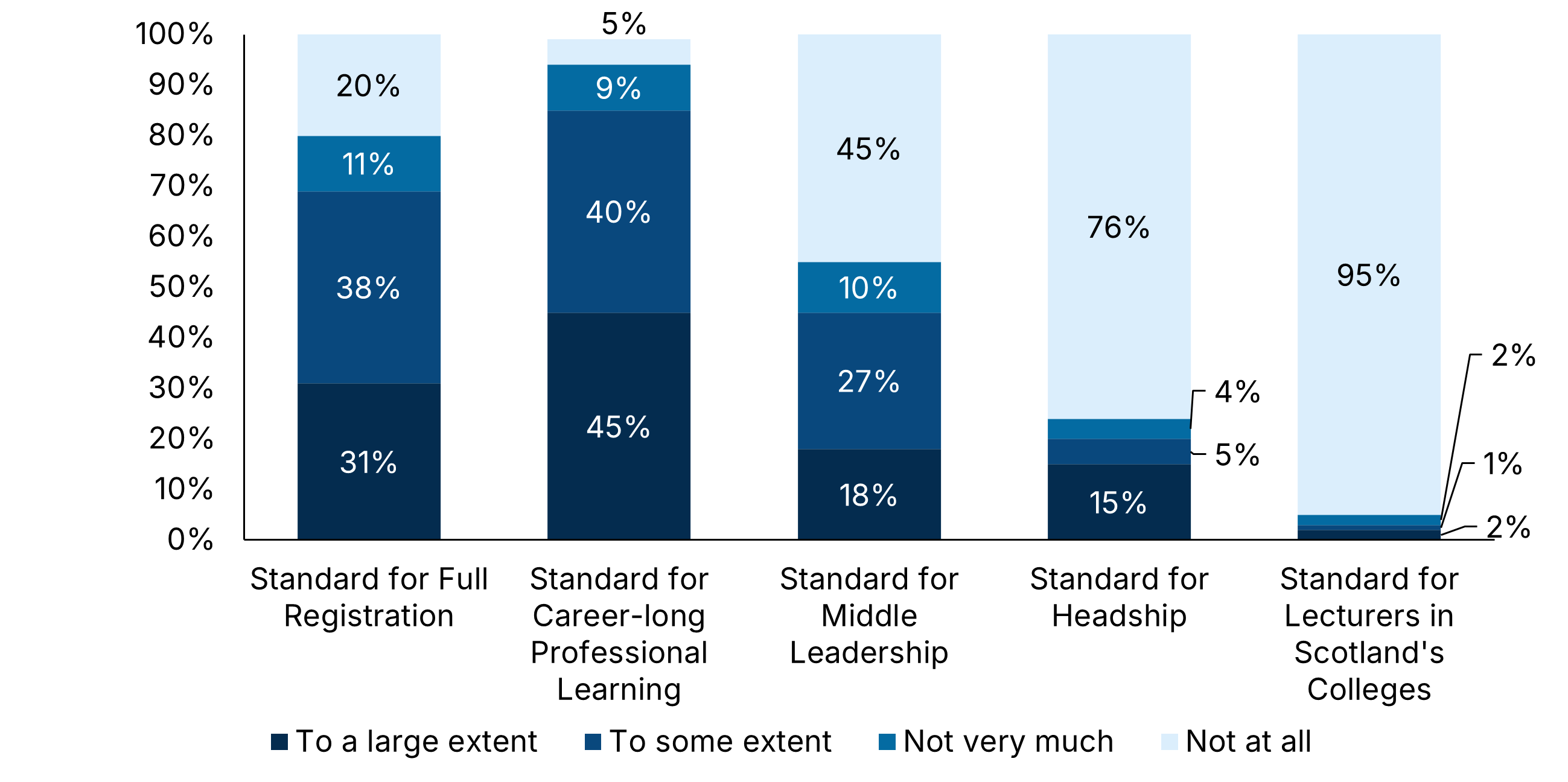
Respondents were asked which factors had helped or supported their engagement with the Professional Standards to self-evaluate and plan professional learning. Three factors scored a rating of over 50% with 73% of respondents stating the PRD meeting helped or supported their engagement with the Professional Standards, 57% citing professional dialogue with colleagues and 54% citing time to read and reflect on the Professional Standards. The results are shown in table 6 (n=547).
{{fs-PU-2324-table-6="/section-components"}}
Respondents were then asked which factors may have limited or hindered their engagement with the Professional Standards to self-evaluate and plan their professional learning, as shown in table 7 (n=547). 46% of respondents said that no factors had limited/hindered their engagement with the three highest limiting factors being other factors more relevant/appropriate for their self-evaluation (26%), other priorities (21%) and not having time to fully engage with the Professional Standards (18%).
{{fs-PU-2324-table-7="/section-components"}}
Professional Learning
Reviewees were asked how they had recorded their professional learning, as shown in table 8 (n=484).
{{fs-PU-2324-table-8="/section-components"}}
Respondents were asked what the focus of their professional learning was. Fifteen options were available to select and the top 5 selected as the main focus are shown in graph 19 (n=484).
<span id="es-chart-01" class="table_caption" style="text-align:center; margin: auto; display: block; padding-top: 3.5rem">Graph 19: Professional learning focus</span>
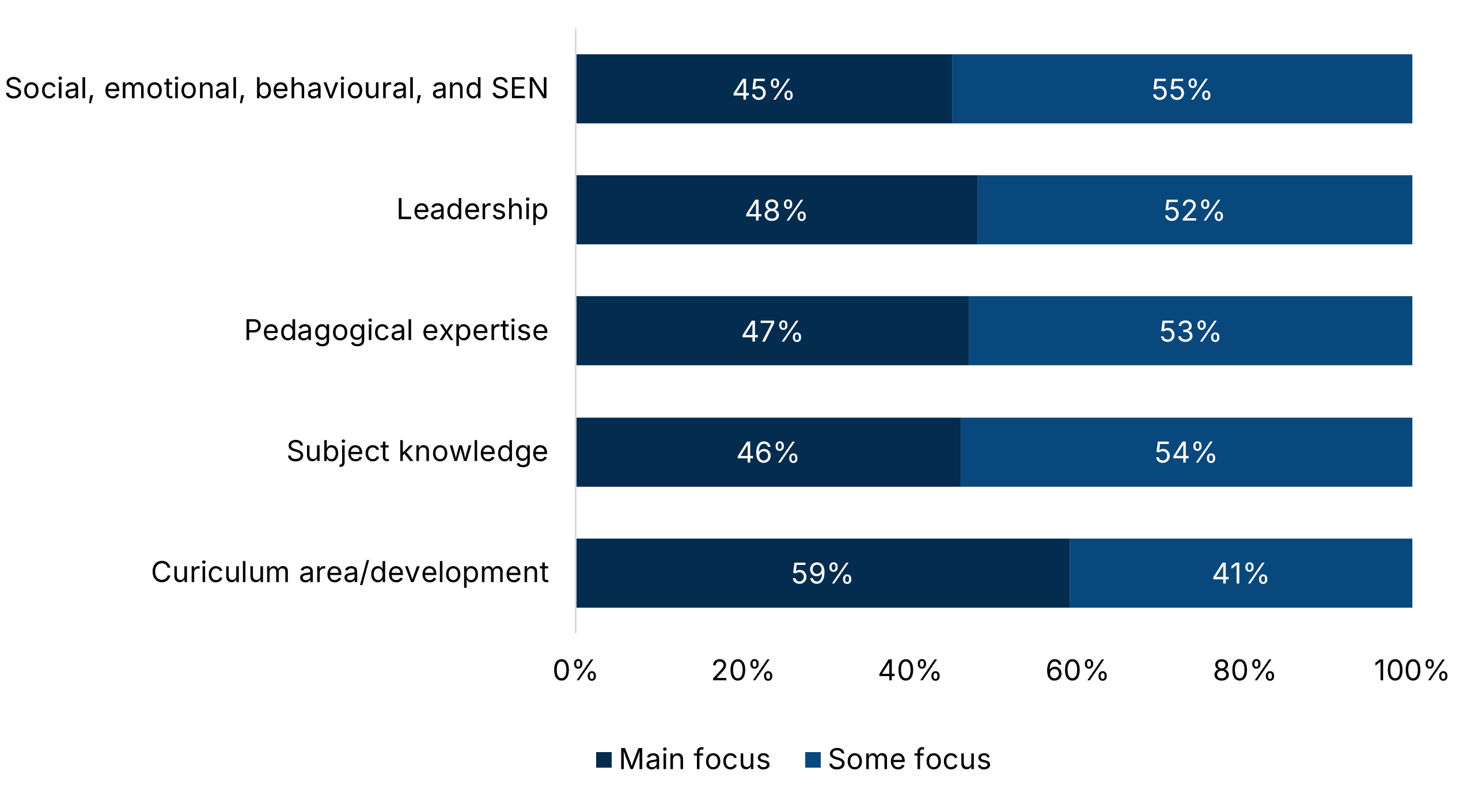
Graph 20 (n=484) indicates the types of professional learning reviewees engaged in with 50% of respondents identifying collaborative learning with others and attendance at PL course/event as the main type of engagement.
<span id="es-chart-01" class="table_caption" style="text-align:center; margin: auto; display: block; padding-top: 3.5rem">Graph 20: Professional learning types</span>
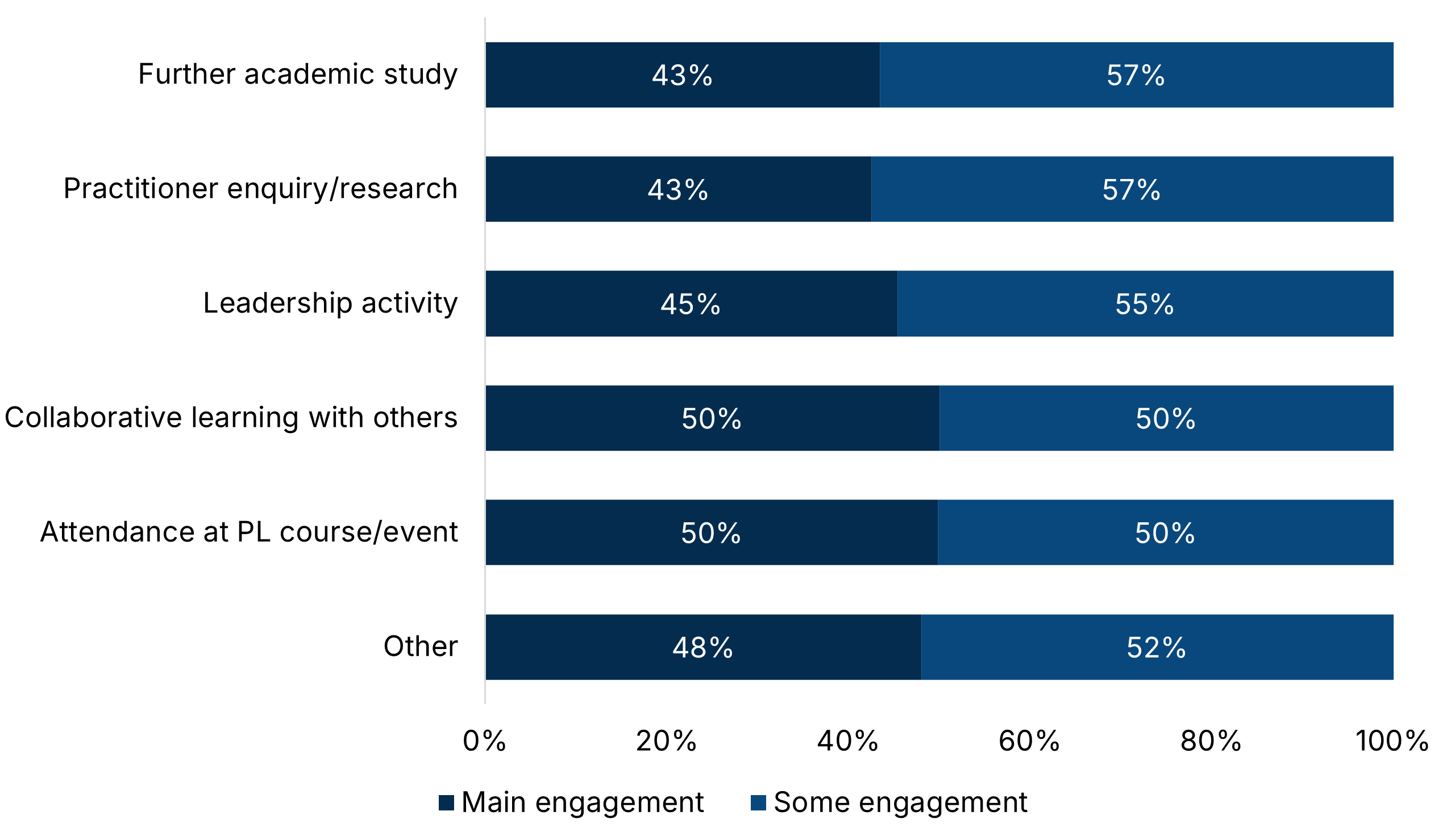
Respondents were asked ‘Thinking about the professional learning you have engaged in this year, please rate the extent of your agreement with the following.’ Results are shown in graph 21 (n=484) with 91% of respondents feeling they had ownership of their professional learning to a large extent or to some extent and 91% also feeling their professional learning had been relevant to their development needs.
<span id="es-chart-01" class="table_caption" style="text-align:center; margin: auto; display: block; padding-top: 3.5rem">Graph 21: Professional learning value</span>
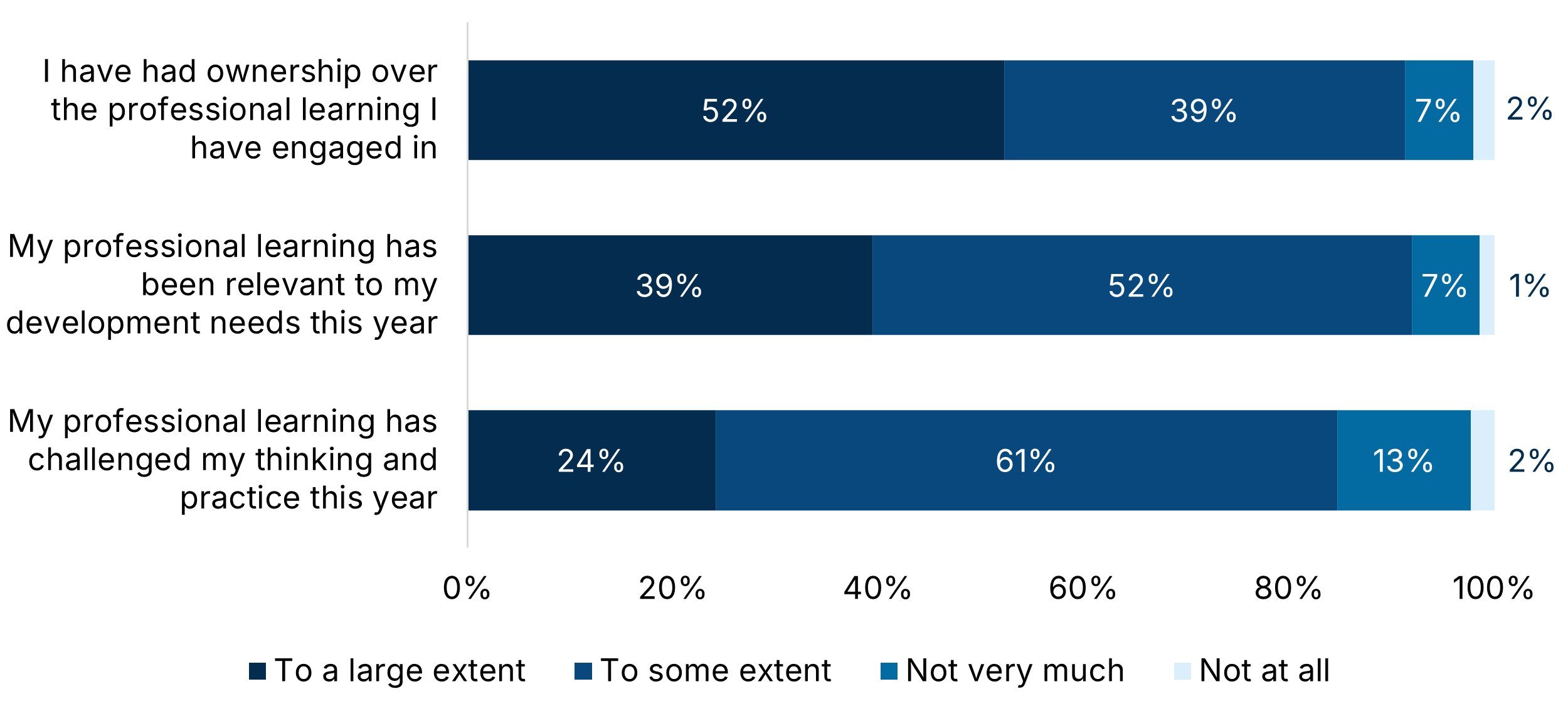
Of 480 respondents, 76% reported that they had gathered evidence of the impact of their professional learning. The extent of the impact of reviewees’ professional leaning is illustrated in graph 22 (n=484). The biggest impact was on pupils with 92% of respondents stating that their professional learning impacted on their pupils to a large extent or to some extent and 91% stating that it impacted on them to a large extent or to some extent.
<span id="es-chart-01" class="table_caption" style="text-align:center; margin: auto; display: block; padding-top: 3.5rem">Graph 22: Professional learning impact</span>

Professional Review and Development (PRD) discussion
Of the 692 Reviewees who answered, 92% confirmed that they had a PRD meeting as part of the PU sign-off process. Of the 529 who reported on how useful their PRD meeting was, 24% stated that their PRD meeting was not very useful or not useful at all.
Reviewees were also asked ‘Please tell us which factors prevented your opportunity to discuss your self-evaluation, professional learning and evidence of impact and plan future development needs as part of the PRD process?’. Many factors were mentioned with the most common related to issues with the reviewee’s line manager; illness; lack of time; lack of support for supply teachers; and personnel changes within the school which impacted on the process.
<span id="es-chart-01" class="table_caption" style="text-align:center; margin: auto; display: block; padding-top: 3.5rem">Graph 14: Tools used by reviewees to prepare for PRD discussion</span>

Graph 14 (n=621) shows the tools used by reviewees in order to prepare for their PRD meeting with the highest percentage of respondents (80%) using their professional learning record and 71% using their department/school improvement plan. More than half of teachers (54%) indicated that they reflected on evidence of impact to prepare for their PRD meeting. This percentage is relatively low and suggests that further work could be done in this area to encourage reviewees to reflect more deeply.
<span id="es-chart-01" class="table_caption" style="text-align:center; margin: auto; display: block; padding-top: 3.5rem">Graph 15: Focus of PRD discussion</span>

Graph 15 (n=529) shows the main areas of focus for PRD discussion. For 50% of respondents, career planning was not part of the discussion. The registrant’s professional learning and future development needs scored highest (95%) with 93% of respondents also discussing their school/departmental/organisational priorities/issues, the needs of the pupils and the impact of their professional learning on themselves and their practice.
Respondents were asked to reflect on the balance of support and challenge at their PRD meeting. Graph 16 (n=529) shows that 84% of reviewees felt there was just about the right balance of support and challenge.
<span id="es-chart-01" class="table_caption" style="text-align:center; margin: auto; display: block; padding-top: 3.5rem">Graph 16: Balance of support and challenge</span>

<span id="es-chart-01" class="table_caption" style="text-align:center; margin: auto; display: block; padding-top: 3.5rem">Graph 17: Balance of support and challenge compared to coaching and/or mentoring approach</span>

Graph 17 compares the responses of those from graph 16 with their thoughts on whether a coaching and/or mentoring approach was used. It shows that 76% of those who thought there was the right balance of support and challenge also thought that a coaching and/or mentoring approach was used to a large extent or to some extent. This shows a relationship between the perceived use of a coaching and/or mentoring approach and the right balance of support and challenge.
Standards
Of the 621 reviewees who responded to the question ‘To what extent did you use the Professional Standards for your self-evaluation in preparation for your PRD meeting?’, 12% did not use the Professional Standards very much or at all. The respondents were then asked which Standards they used and to what extent, and the responses are shown in graph 18. The Standard for Career-long Professional Learning was most used with 85% of respondents using that Standard to a large extent or to some extent. The Standard for Full Registration was second highest at 69%. It should be noted that the low percentage of respondents using the Standard for Lecturers in Scotland’s Colleges could be indicative of a lower percentage of college lecturers responding to the survey compared to schoolteachers and should therefore be treated with caution.
<span id="es-chart-01" class="table_caption" style="text-align:center; margin: auto; display: block; padding-top: 3.5rem">Graph 18: Standards used for PRD preparation</span>

Respondents were asked which factors had helped or supported their engagement with the Professional Standards to self-evaluate and plan professional learning. Three factors scored a rating of over 50% with 73% of respondents stating the PRD meeting helped or supported their engagement with the Professional Standards, 57% citing professional dialogue with colleagues and 54% citing time to read and reflect on the Professional Standards. The results are shown in table 6 (n=547).
{{fs-PU-2324-table-6="/section-components"}}
Respondents were then asked which factors may have limited or hindered their engagement with the Professional Standards to self-evaluate and plan their professional learning, as shown in table 7 (n=547). 46% of respondents said that no factors had limited/hindered their engagement with the three highest limiting factors being other factors more relevant/appropriate for their self-evaluation (26%), other priorities (21%) and not having time to fully engage with the Professional Standards (18%).
{{fs-PU-2324-table-7="/section-components"}}
Professional Learning
Reviewees were asked how they had recorded their professional learning, as shown in table 8 (n=484).
{{fs-PU-2324-table-8="/section-components"}}
Respondents were asked what the focus of their professional learning was. Fifteen options were available to select and the top 5 selected as the main focus are shown in graph 19 (n=484).
<span id="es-chart-01" class="table_caption" style="text-align:center; margin: auto; display: block; padding-top: 3.5rem">Graph 19: Professional learning focus</span>

Graph 20 (n=484) indicates the types of professional learning reviewees engaged in with 50% of respondents identifying collaborative learning with others and attendance at PL course/event as the main type of engagement.
<span id="es-chart-01" class="table_caption" style="text-align:center; margin: auto; display: block; padding-top: 3.5rem">Graph 20: Professional learning types</span>

Respondents were asked ‘Thinking about the professional learning you have engaged in this year, please rate the extent of your agreement with the following.’ Results are shown in graph 21 (n=484) with 91% of respondents feeling they had ownership of their professional learning to a large extent or to some extent and 91% also feeling their professional learning had been relevant to their development needs.
<span id="es-chart-01" class="table_caption" style="text-align:center; margin: auto; display: block; padding-top: 3.5rem">Graph 21: Professional learning value</span>

Of 480 respondents, 76% reported that they had gathered evidence of the impact of their professional learning. The extent of the impact of reviewees’ professional leaning is illustrated in graph 22 (n=484). The biggest impact was on pupils with 92% of respondents stating that their professional learning impacted on their pupils to a large extent or to some extent and 91% stating that it impacted on them to a large extent or to some extent.
<span id="es-chart-01" class="table_caption" style="text-align:center; margin: auto; display: block; padding-top: 3.5rem">Graph 22: Professional learning impact</span>

End of document
"
"
"
"
"
"
